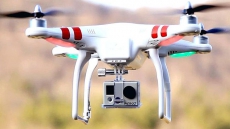Simple texting on smartphone can exert nearly 23 kg of pressure on your spine depending on the angle at which you are texting, an alarming research has revealed.
“Loss of the natural curve of the cervical spine leads to incrementally increased stresses about the cervical spine,” wrote study author Kenneth K. Hansraj, a New York-based spinal and orthopaedic surgeon.
Your spine is at its happiest when your ears fall on the same plane as your shoulders and your shoulder blades are retracted.
“Without these adjustments, you put added stress on your spine,” Hansraj added.
During the study, Hansraj calculated how stressful varying degrees of curvature would be on a person’s spine.
At zero degrees of tilt, the resting pressure is equal to the weight of the person’s head - roughly 4.5 kg-5.5 kg.
But for each 15 degrees of tilt, the pressure increases.
At 15 degrees, a person feels 12 kg of pressure; at 30 degrees, it ups to 18 kg.
At 60 degrees, a person should feel roughly 27 kg of force on the spine.
People use mobile devices for roughly two to four hours a day, meaning our necks stay bent for 700 to 1,400 hours in a given year.
“High school students are even worse as they may hit 5,000 hours before they graduate,” Hansraj added.
While it is nearly impossible to avoid the technologies that cause these issues, individuals should make an effort to look at their phones with a neutral spine and to avoid spending hours each day hunched over, the author suggested.
People should stop holding their phones by their waists and surgeons should help minimise post-surgery complications by keeping patient behaviours in mind, Hansraj concluded.
The study appeared in the journal Surgical Technology International.





